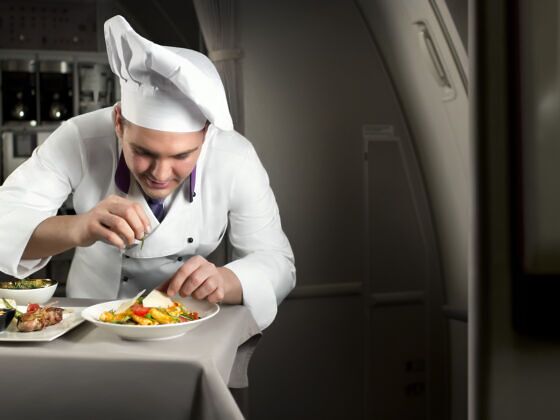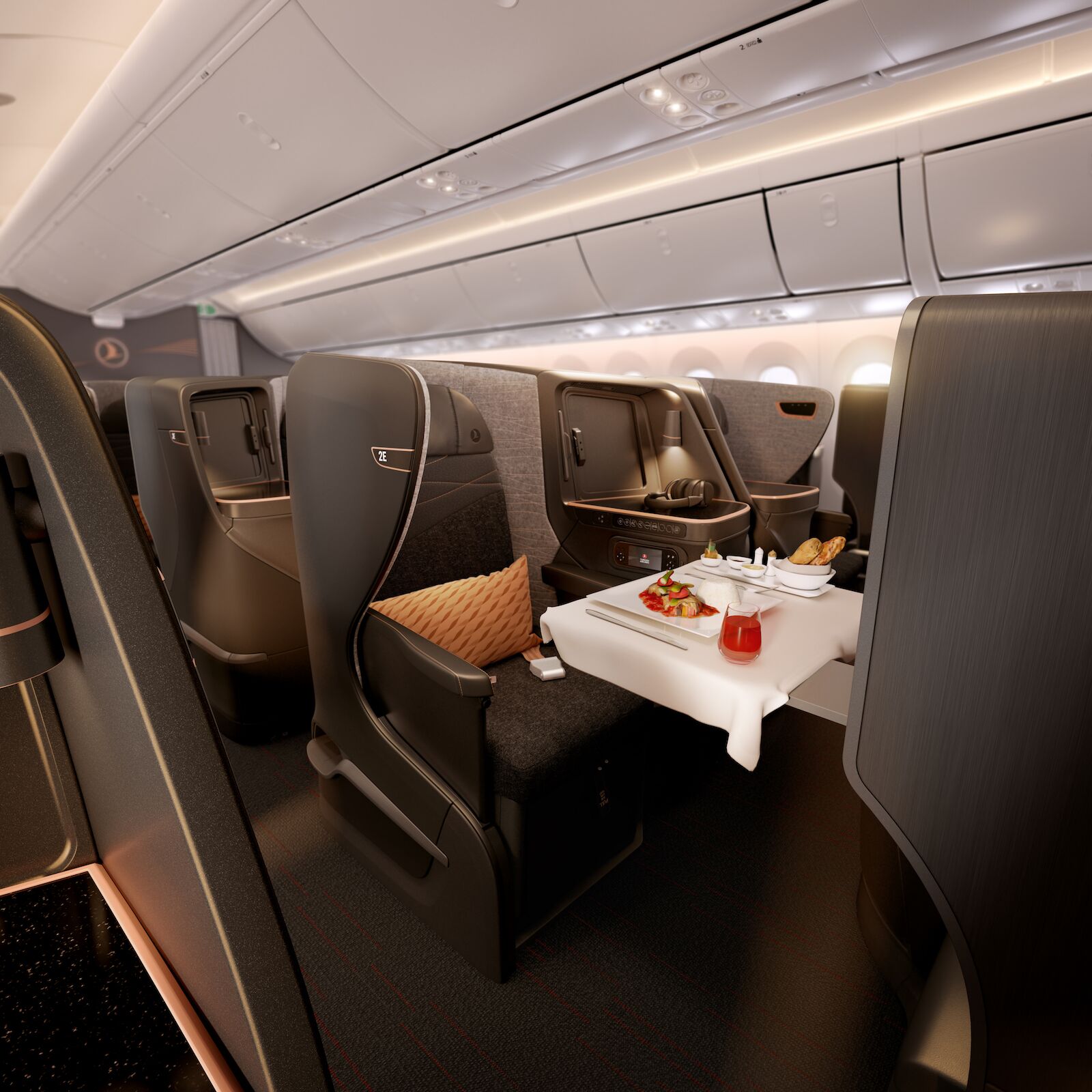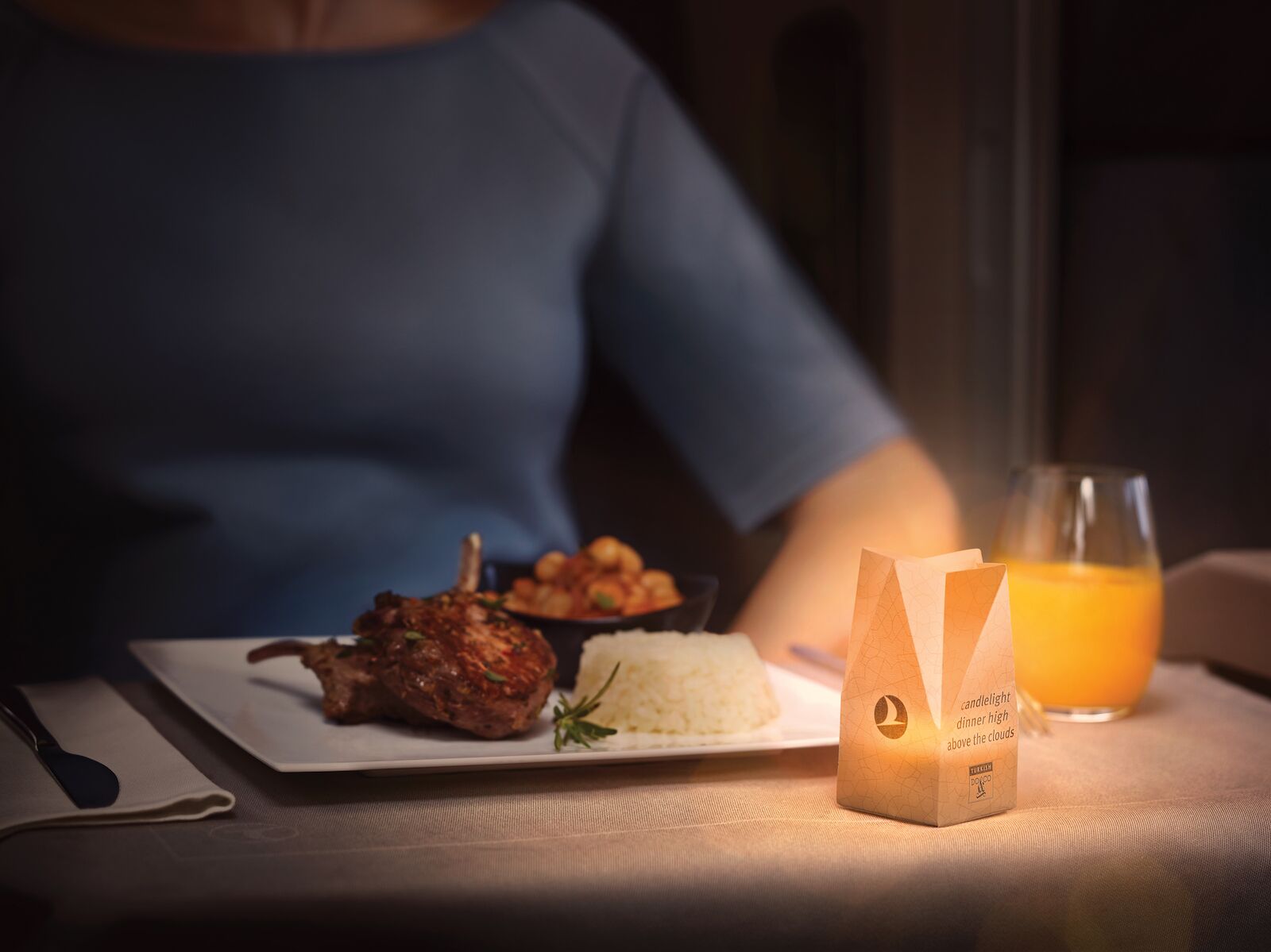Complaining about airline food has become a cliche. Traditionally, inflight meals leave something to be desired, in both quantity and quality. And it makes perfect sense. With thousands of long-haul flights per day, each responsible for serving hundreds of passengers, meals typically need to be prepared en masse, so it’s not exactly a surprise that the food isn’t Michelin-star quality. Many passengers even bring their own food onboard to avoid the plane meal situation entirely. While business fare is obviously a major step up, the overall inflight dining experience remains rather uninspired. Some airlines, however, are trying to change that.


Turkish Airlines’ Flying Chefs Are Taking Inflight Fine Dining to the Next Level
In 2021, Turkish Airlines relaunched its Flying Chef program for business-class passengers on long-haul flights. Dressed like every white-clad chef you’ve seen in the movies (think “Ratatouille”), the Flying Chefs are in charge of cooking and overseeing inflight food preparation and taking passenger orders. Passengers can choose from a menu of high-quality dishes inspired by traditional Turkish cuisine, dine with stylish porcelain tableware, and even have the option to enjoy their meal by candlelight. It feels more like sitting down to eat at a five-star restaurant (with a little turbulence for ambiance) than reluctantly picking at a re-heated airplane meal.
How airline food is normally prepared
Trigger warning: To some, learning where plane food comes from might feel like learning how they make the food at McDonald’s. Okay, it’s probably not that bad. Most airplane food is handled by companies like Gate Gourmet, which specialize in large-scale food preparation, and it’s not the typical kitchen environment you’d imagine in your standard restaurant.
At JFK, for example, Gate Gourmet uses a 90,000-square-foot facility to prepare meals for around 40 international flights per day, which equates to approximately 13,000 meals per day. Instead of cooking and immediately serving the food, like at a restaurant, airplane food is cooked and then kept chilled for later.
“Instead of immediately serving the food, we will put the meals into a blast chiller to be reheated by the crew on the plane,” Damon Kessler, the executive chef for Gate Gourmet, told The Points Guy. “That means that every plate is cooked, chilled, and reheated in ovens. There are no microwaves on board, for safety reasons.”
It’s not quite as bad as it might sound, though. The menu items are chosen to take into account the moisture elements and dry airplane environment, and detailed reheating instructions are given to the onboard crew. It’s all an attempt to simulate restaurant-quality food in the air. As we all probably know from personal experience, sometimes it works, and we get an airplane meal we genuinely enjoy. But other times, it just doesn’t.
Flying Chefs are shaking things up
Airlines are clearly taking strides toward improving their food quality and service, trying to emulate a real restaurant experience. Flying Chefs might be one the flashiest improvements we’ve seen in air travel. But besides dressing up in convincing chef-like outfits and creating an aesthetic restaurant illusion, how does the Flying Chef program actually work?

Photo: Turkish Airlines
“What makes the service ever so impressive is the fact that much of the cooking is done with a boutique production, not an industrialized production,” Eren Berker, Flying Chef Senior Ground Trainer for Turkish Airlines, tells Matador Network. “Our Flying Chefs are working there too. This ensures we have a direct line from passenger feedback to our operation with chefs on the ground. Our food is cooked 70 percent in our base kitchens, with the remaining 30 percent done in the aircraft ovens by Flying Chefs or cabin crews.”
Each flight over eight hours has one or two Flying Chefs onboard who are responsible for the business-class cabin. According to Berker, “the loading and the preparation of the food is arranged to give the chefs on board the chance to create the same type of cuisine and experience that a customer would expect from a five-star restaurant.”
While business-class meals on all airlines are of reliably higher quality than economy, Turkish Airlines is trying to give passengers a real taste of Türkiye — both in the food itself and in the overall dining experience.
“We place a strong emphasis on providing high quality, authentic Turkish and worldly cuisine,” Berker says. “The airline sources 80 percent of the products used in its menus from local producers in different regions of Türkiye. The menus, created with a preference for local and seasonal products, feature Rize tea, Afyon kaymak (cream), Erzincan honeycomb, and many other regional products.”
What does that look like, exactly? Well, flying with the Flying Chefs means indulging in local Turkish dishes like the famous Adana kebab (a dish consisting of long, hand-minced meat), Turkish mixed kebabs, eggplant stuffed with ground meat, a ravioli-like pastry with yogurt, a Turkish eggplant dish called İmam bayildi, and more.

Photo: Turkish Airlines
“Passengers taste Turkish olive oil, Turkish butter, accompanied by the spice of the month along with their individual bread basket,” Berker says. “Turkish Tea is also served in semaver (turkish tea kettles) in a traditional way, with a modernized version.”
You can also expect a more sophisticated ambiance, including stylish dinnerware and cutlery (goodbye plastic forks) and little candles designed to set the mood while you indulge. The whole idea is to trick you into forgetting you’re on a plane at all and instead remind you of eating at your favorite restaurant back home.
And though Flying Chefs might not always be plucked straight from the kitchens of Michelin-starred restaurants, Turkish Airlines doesn’t let just anyone don the coveted white toque.
“We look for at least three years of culinary experience in five-star hotels, cruise ships, or gourmet restaurants,” says Berker. “Preferably a culinary school graduate, with fluency in both English and Turkish. We also look for chefs who are knowledgeable and remain curious about the latest food and restaurant trends.”
Despite how it might first appear, it’s not just about those cool white chef’s outfits. The real value of the Flying Chefs lies in preparing high-quality meals, adhering to Turkish culinary tradition, and creating a five-star restaurant atmosphere 30,000 feet in the air.